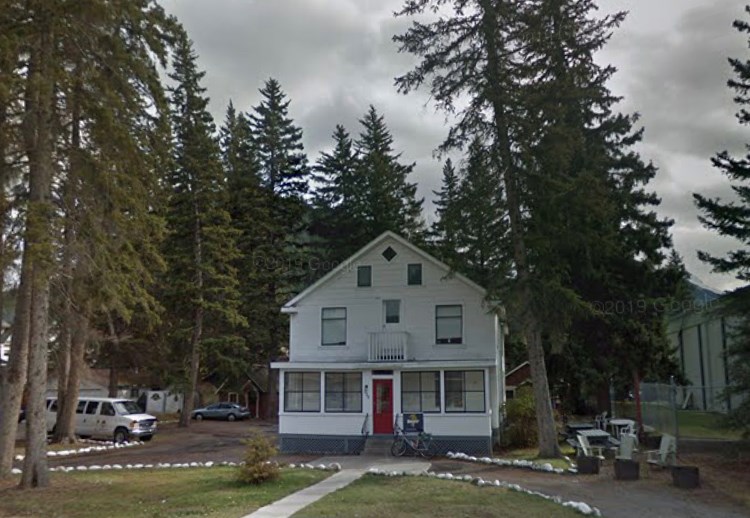BANFF – The Town of Banff is gearing up to build its next affordable housing development to deal with the tourist town’s housing crunch.
On Monday (July 15), council voted 4-2 to move ahead with an $8.5 million price-restricted, entry-level home ownership development on Banff Avenue before an $18.8 million affordable rental project on Cave Avenue.
Town officials say that any development, either rental or entry-level home ownership, will help alleviate the housing shortfall, which currently sits at just over 300 units and is projected to grow anywhere between 663 and 720 units by 2027.
But Councillor Peter Poole flagged concerns about population growth calculations used by administration, saying he believes it’s higher than one per cent a year, which means the shortfall will be even higher than anticipated.
“We’re suffering a problem where the train is running away from us faster than we can catch it because we’re dealing with the supply side, but not yet with the demand side,” Poole said.
“We need to do all we can to limit the expansion of those businesses that are causing pressure on the housing supply in the first place … I think that a strategy working on both supply and demand will be more successful than one that is only working on the supply.”
Administration will return to council with a detailed scope of work report to proceed with the proposal for 29 one and two-bedroom units for entry-level home ownership at 338-340 Banff Ave., purchased by Banff Housing Corporation (BHC) for $1.3 million in 2013.
Funding for the $8.5 million project would be recovered through the sale of units, but a short-term borrow of $7.2 million for 18 to 24 months during the construction period is required until all units are sold.
As with previous price restricted home ownership projects, units would be pre-sold to eligible buyers on BHC’s registered resale list, which currently has 218 applications. Under this model, an equity component would be developed based on the cost to build and the appraised value of the units.
The Cave Avenue location, released by Parks Canada in 2015 for an affordable rental development, would include 81 studio, one and three-bedroom units. The $18.8 million development can be built without tax support through the use of the community housing reserve tied to Ti’nu, either annually or from a lump sum draw at the end of 2023.
While some councillors expressed a wish to do both projects at once, Town Manager Robert Earl said the municipality might run into short-term borrowing service cost issues and it would put too much stress on the engineering department.
“Administration would far prefer to do them in sequence, so yes we can do both – in sequence,” he said.
Coun. Corrie DiManno said it was tough to decide which project to move ahead with first, but noted Banff’s last project was the affordable rental Ti’nu project.
“Obviously we still have work to do in both areas, but to me, it comes down to what have we done for entry-level home ownership lately, and I think it’s time to give some attention to that,” she said.
The entry-level home ownership project on Banff Avenue also makes more financial sense at this time to DiManno because it allows time to build up the housing reserve from surplus Ti’nu funds.
“I also think that moving on Banff Avenue will help retain people that we might lose in the community,” she said, noting a survey of 500 people interested in homeownership indicated 82 per cent were considering leaving Banff to buy elsewhere.
Coun. Grant Canning said he believes affordable rental housing is a more pressing issue. The rental vacancy rate has hovered around zero for many years, but a healthy rate is considered between three and five per cent.
“As much as Ti’nu has helped, I personally believe rental is still the No. 1 issue we have in our community,” he said.
“In addition to that, Cave Avenue is 81 units and Banff Avenue is 29 and I would prefer to do more units sooner, rather than delaying the big project later.”
Sharon Oakley, the Town of Banff’s manager of housing sustanability, said four housing surveys since 2015 have contributed to the municipality’s knowledge on housing needs, and along with other data, shows evidence for the need for both rental and entry-level home ownership.
“Evidence indicates the need for both rental and entry-level home ownership,” she said. “Both options will address the shortfall of units and both are aimed at different demographics.”
Oakley said data shows that 82 per cent of Banff’s population makes less than $60,000 a year, noting those with the greatest challenges are single parent families, typically single moms, and single adult individuals and renters in our community.
“Our incomes tend to be lower than anywhere else in Canada and housing prices are higher,” Oakley said.
“It’s not a great combination and it makes it challenging to retain people in our community.”
It is anticipated construction on Banff Avenue would begin in the spring of 2020, with a proposed completion in fall of 2021.






